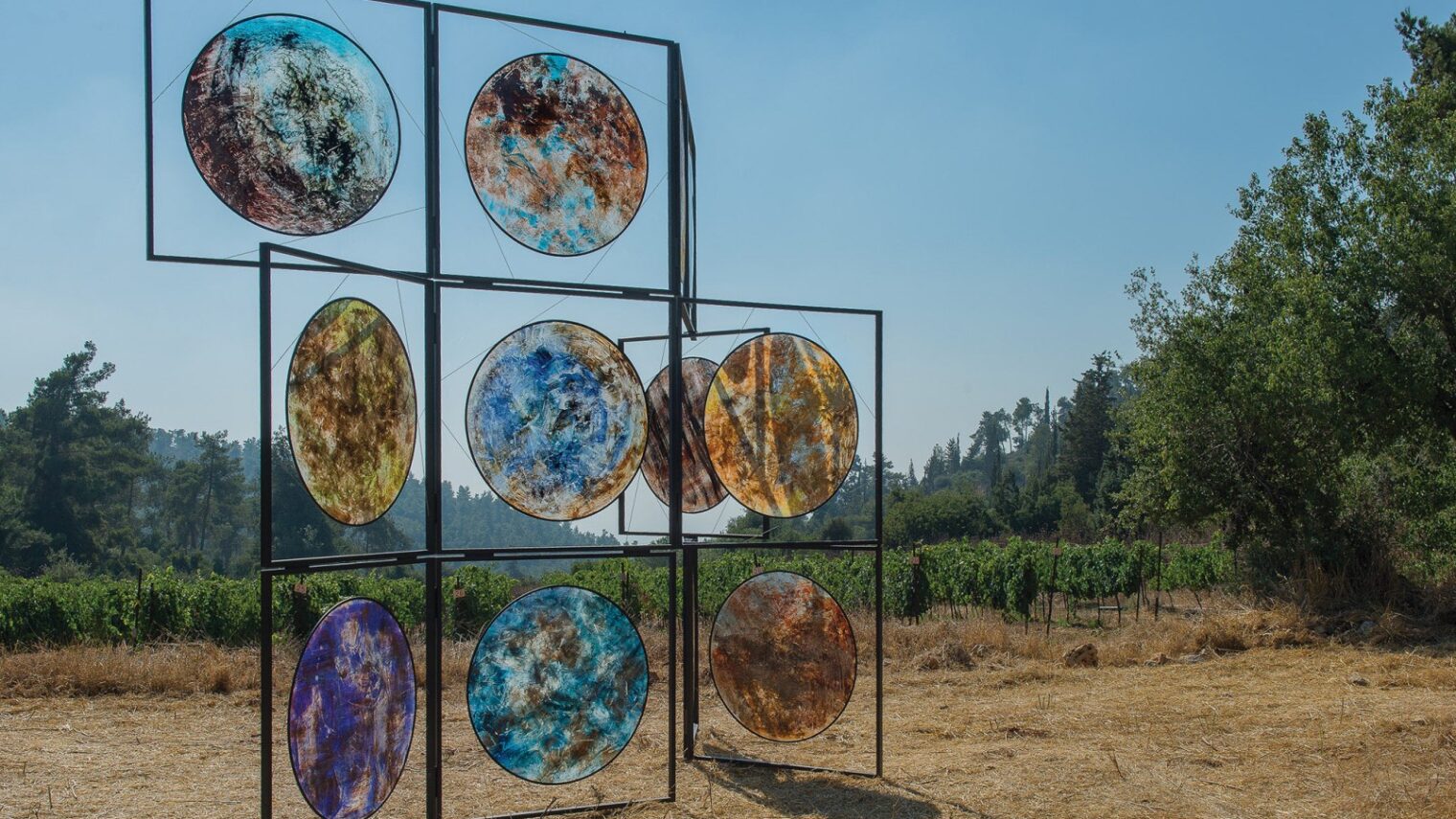Brilliant blue lapis lazuli crushed to a fine resin fills the bottom of a paper cup in the Jerusalem studio of Beverly Barkat alongside shells, stones, semi-precious gems, soil and sand collected across Israel for her upcoming solo exhibition, “After the Tribes,” at Rome’s Museo Boncompagni Ludovisi.
These native materials form the basis for 12 large two-sided paintings on circles of transparent PVC, mounted in a metal framework like the rows of glittering gemstones that represented the 12 tribes of Israel on the breastplate of Judaism’s ancient high priest.
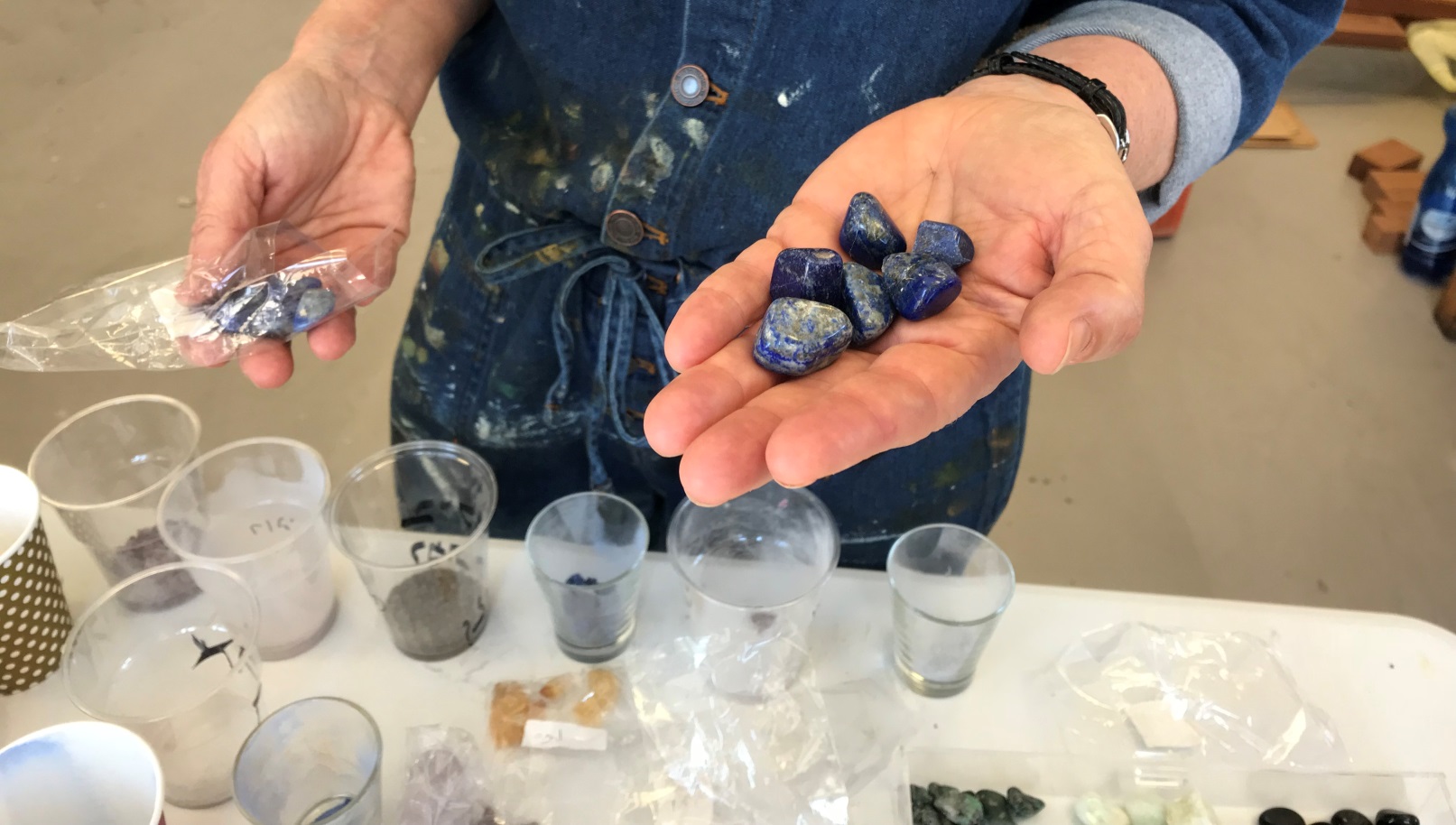
Barkat considered the colors of those gemstones and the landscapes of the tribal territories when developing the palette for her contemporary interpretation, which she conceived and created upon invitation last November from the State of Israel, Polo Museale del Lazio (the Italian museum association) and the Israeli Embassy in Italy to mark modern Israel’s 70th anniversary.
“They gave me a free hand to do whatever I wanted,” Barkat tells ISRAEL21c. “When they showed me the exhibition space in Rome, I decided to bring the different landscapes of Israel into that room.”
Those landscapes project a history much longer than 70 years.
“I went back 3,000 years and started investigating about the tribes, finding old maps, working out exactly where each tribe lived and what they did there physically to sustain themselves,” she explains.
The tribes were descended from the 12 sons of biblical patriarch Jacob: Reuben, Simeon, Levi, Judah, Dan, Naphtali, Gad, Asher, Issachar, Zevulun, Joseph and Benjamin.
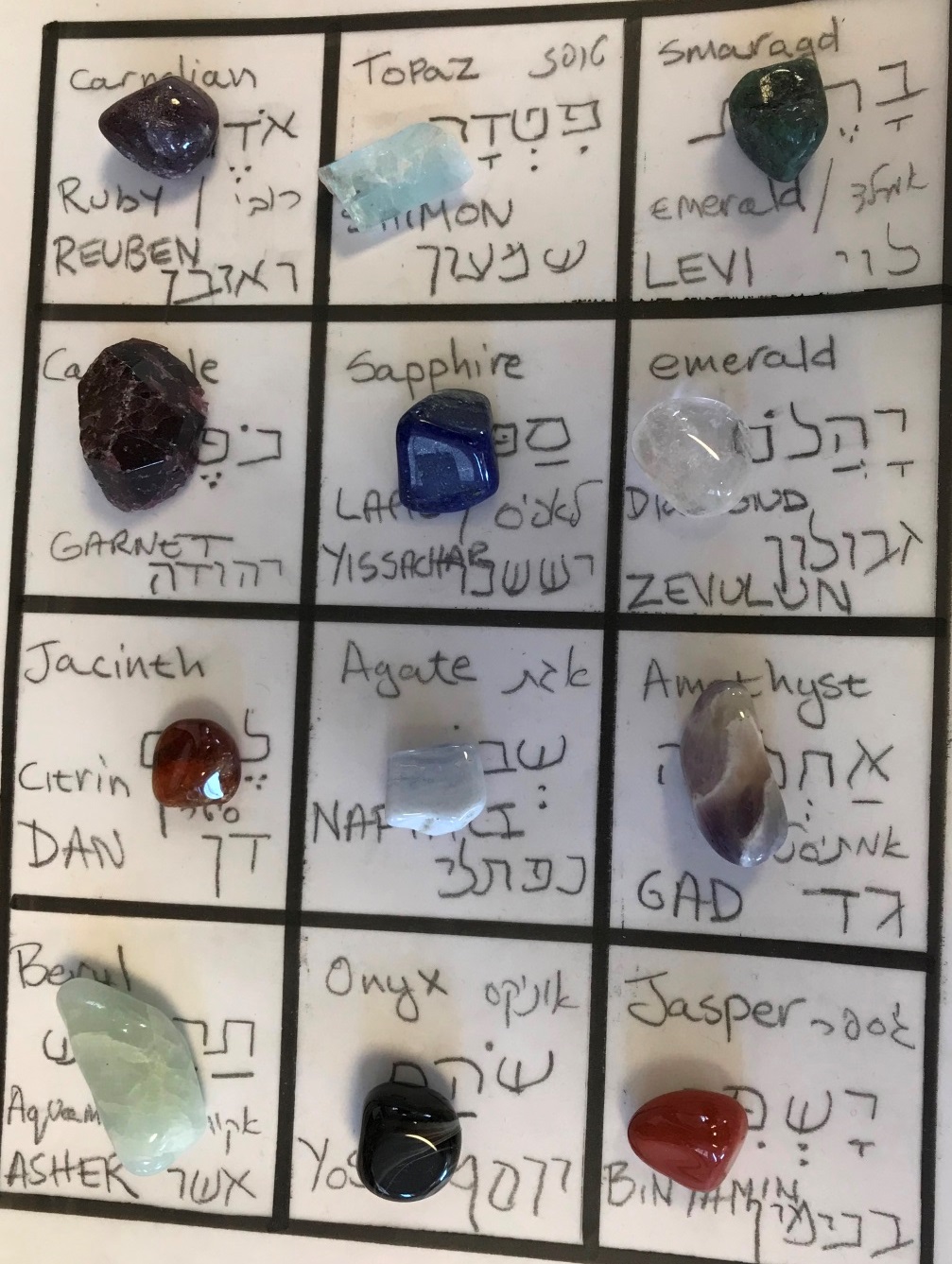
Most of the tribes received dedicated parcels of the Holy Land. The Levites lived among the other tribes and carried out their religious duties in Jerusalem, which straddled the zones of Judah and Benjamin.
“When the tribes came to Jerusalem for the festivals they all came together as one, so there was a dynamic of being one and being independent and finding their own voice,” says Barkat.
And so, for example, the painting representing Asher features aquamarine resin matching the light green of Asher’s breastplate gem and darker green pastel powder symbolizing the olive trees this tribe tended in the Western Galilee.
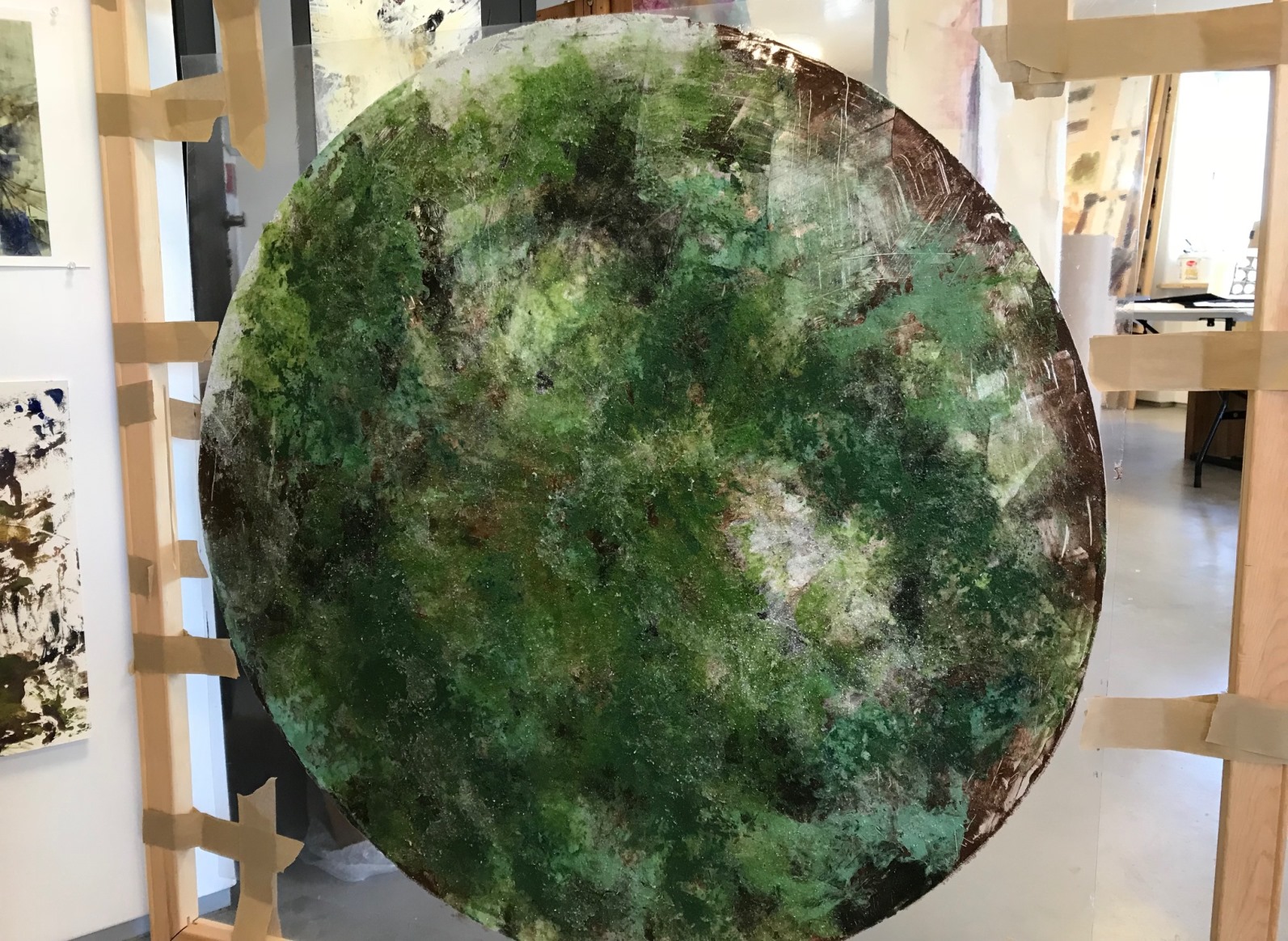
The tribe of Joseph, later divided into the tribes of Ephraim and Menashe, is represented by a crisscross of soils from across Israel, creating a likeness of his legendary “technicolor dreamcoat” and hinting at his central role among Jacob’s children.
Children arguing
These children of Israel became the children of Barkat as she brought them to life on two sides of the PVC — one textured and the other smooth.
“Each painting I do is a continuation of me,” says Barkat, 52, who emigrated at age 10 from South Africa with her artist parents and in recent years developed an original style of painting based on the dynamic movement of horses and humans.
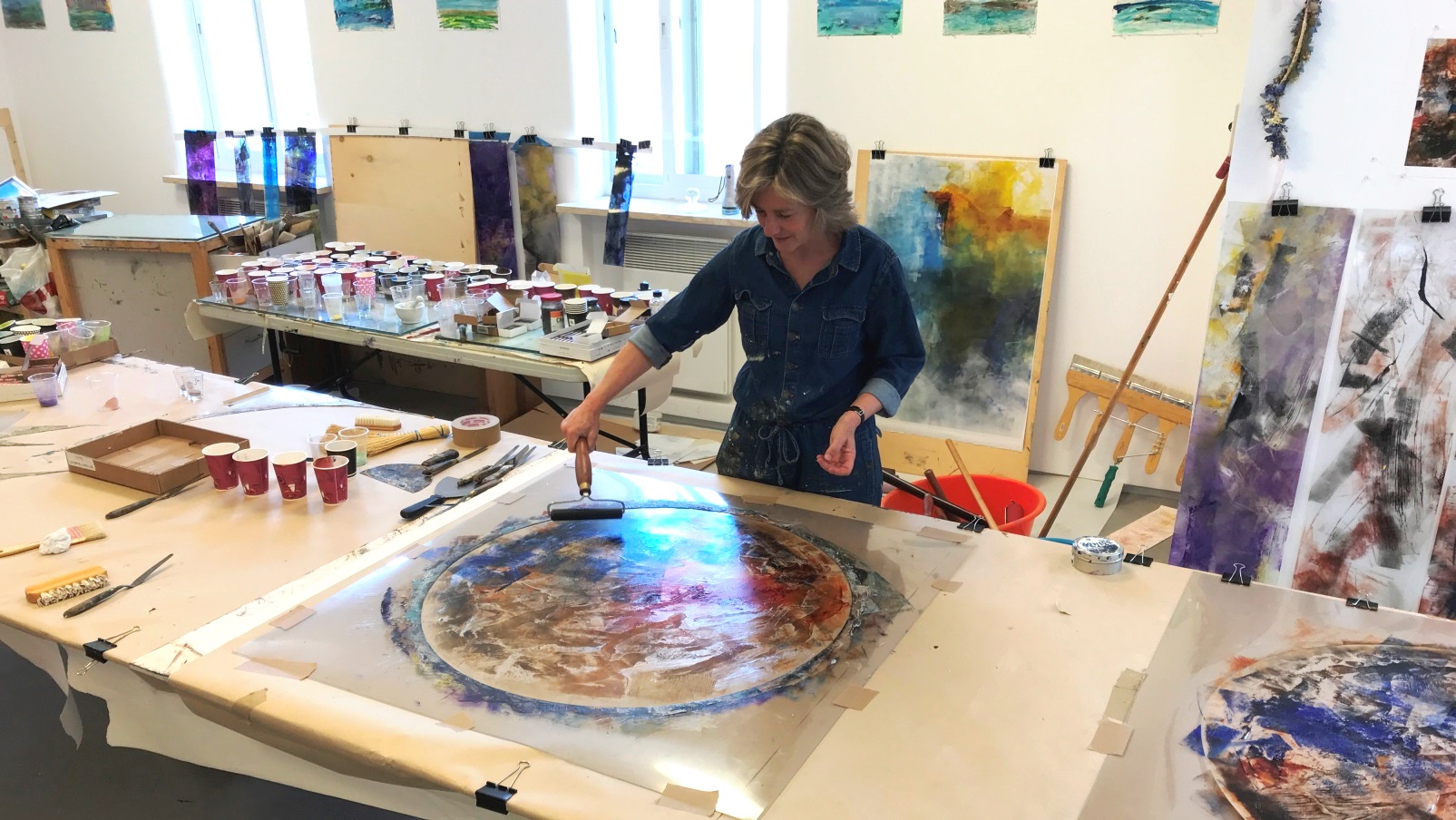
Her critically acclaimed “Evocative Surfaces” exhibition permanently installed at Museo di Palazzo Grimani during the 2017 Venice Art Biennale established her place on the contemporary arts scene.
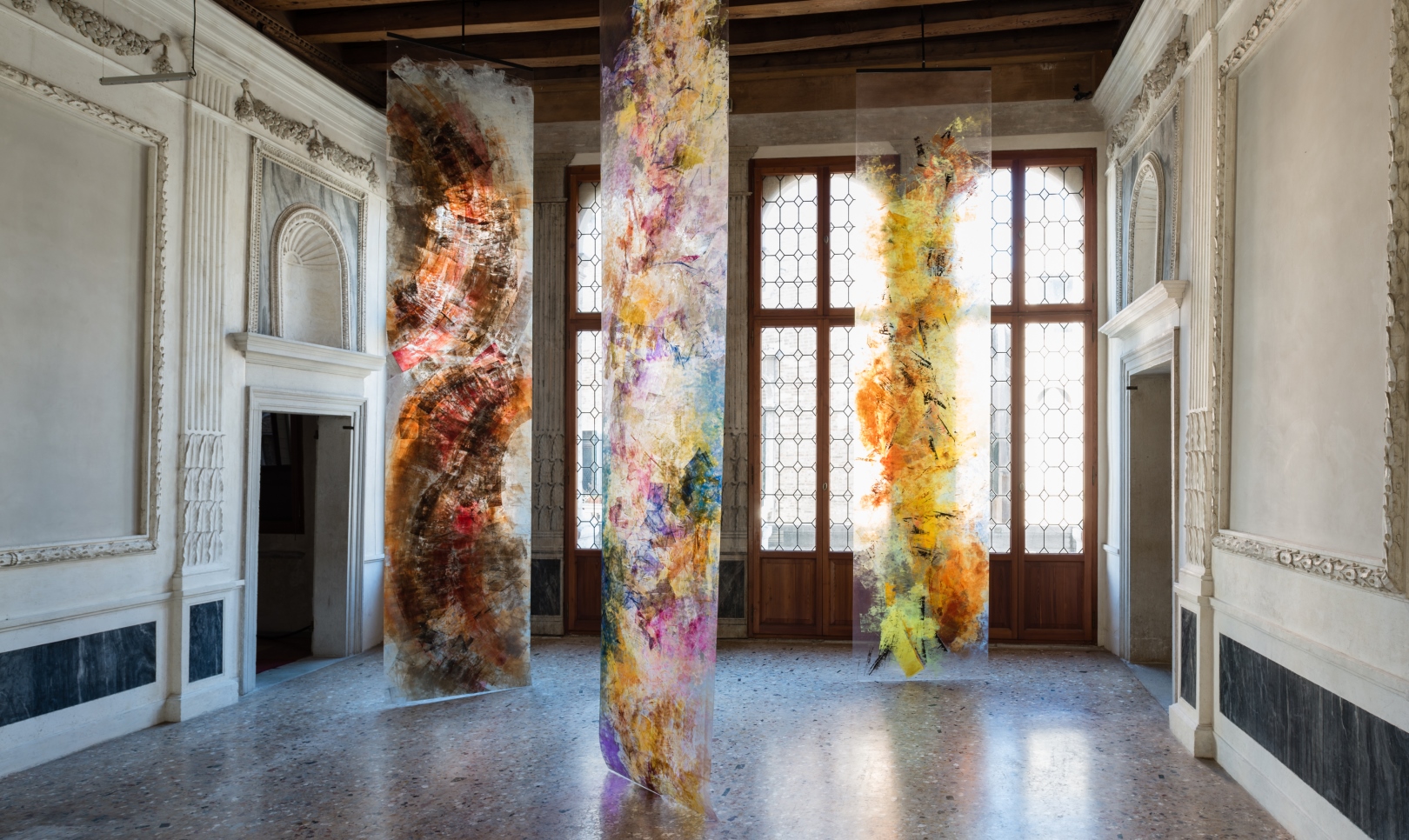
“I started working on PVC because it gives me such a variety of brushstrokes and possibilities for putting on and taking off as you do in drawing,” she tells ISRAEL21c.
“At some point the painting says, ‘Okay, leave me alone now.’ It takes over and tells me to stop. And I’ve learned to listen to that voice. It’s exactly like raising children. You have to release them.”
During the six months she researched, collected and ground together materials to create “After the Tribes,” she sensed the paintings arguing: His is much nicer than mine! How come his painting is more developed than mine?
“And then I would go back to the other painting and see what it needed to push it that step further. When I finished the last one, Gad, suddenly it was as if the fighting had stopped and they had come together as one family. They fit together, the colors were properly balanced and they just calmed down and I was finished,” Barkat relates.
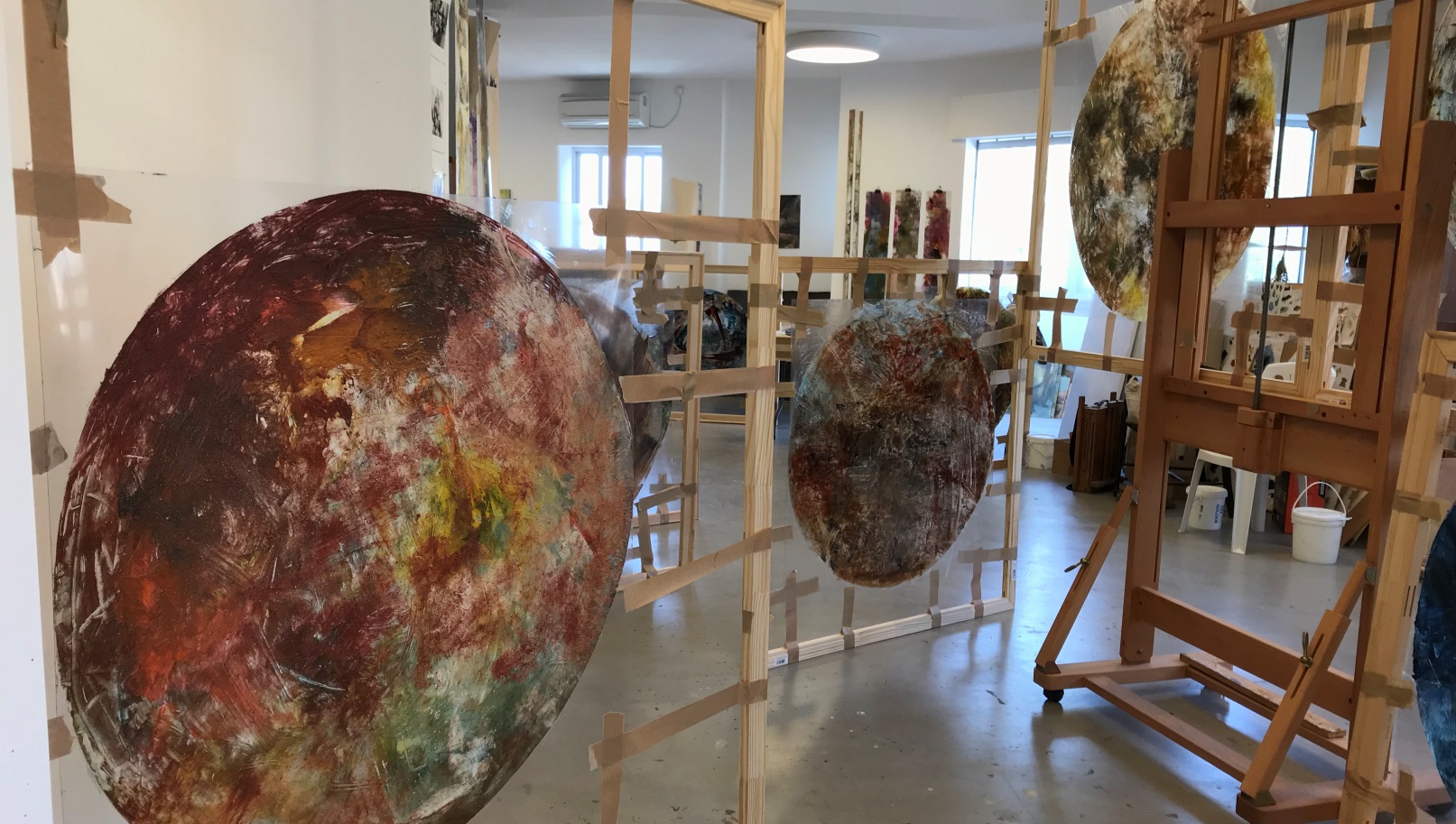
Working in harmony
On July 6, she brought the 12 artworks to blacksmith Yuval Telem in Mattat and secured them in the four-meter frame he fashioned from her instructions.
“Even though the exhibit stands alone I wanted to keep that dynamic of hanging, so I came up with the idea of using cables. Each painting is hung by three cables running through the metal frame using an innovative technique of stretching the cable inside the frame,” Barkat says.
“The real essence of the project is enabling each tribe to respect the other tribes as equals and that’s why they have to work together in harmony.”
The framed spheres were taken to picturesque locations — the caves of Beit Guvrin, a vineyard and Achziv Beach — to be photographed for the exhibition catalog before being shipped to Rome.
Also included in the show will be old tribal maps, a documentary of Barkat’s creative process, and a glass vitrine displaying raw materials she collected throughout Israel with the help of her husband, Jerusalem Mayor Nir Barkat.
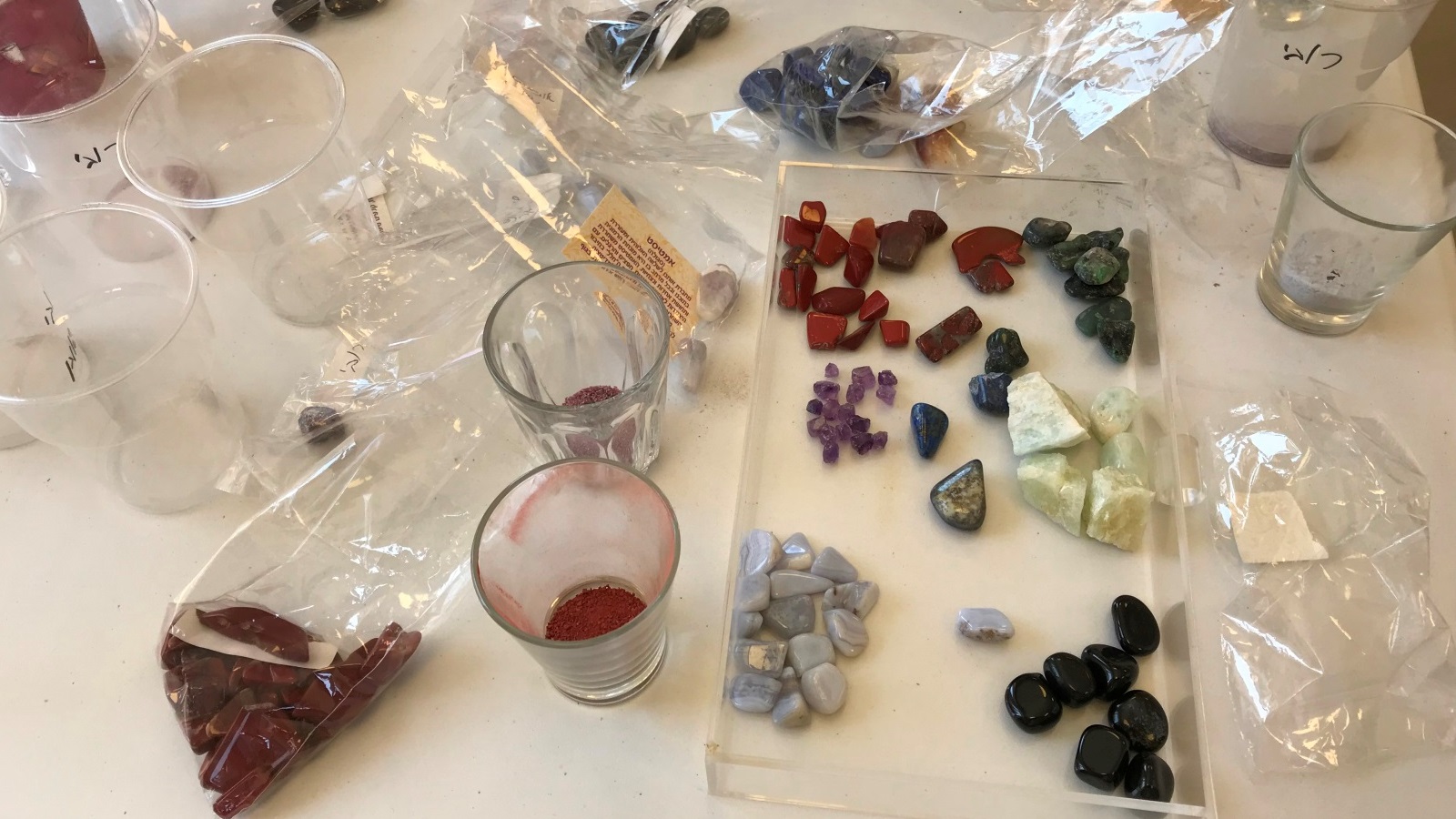
Curated by Giorgia Calò and supported by the Nomas Foundation and the Embassy of Israel in Italy, “After the Tribes” will be exhibited from October 10 to December 31, 2018 at Museo Boncompagni Ludovisi, once the site of Julius Caesar’s villa and today housing the Boncompagni Ludovisi Decorative Arts Museum of the National Gallery of Modern Art of Rome.
The show will go on the road and eventually head back to Israel for permanent display.
Apart from its specific backstory, “After the Tribes” is intended to portray a worldwide dialogue of acceptance, says Barkat.
“You have the right to be who you want to be and I have the right to be who I want to be, enabling the enhancement of one another. The story comes together with the artwork and makes its dimensions bigger.”
For more information, click here




